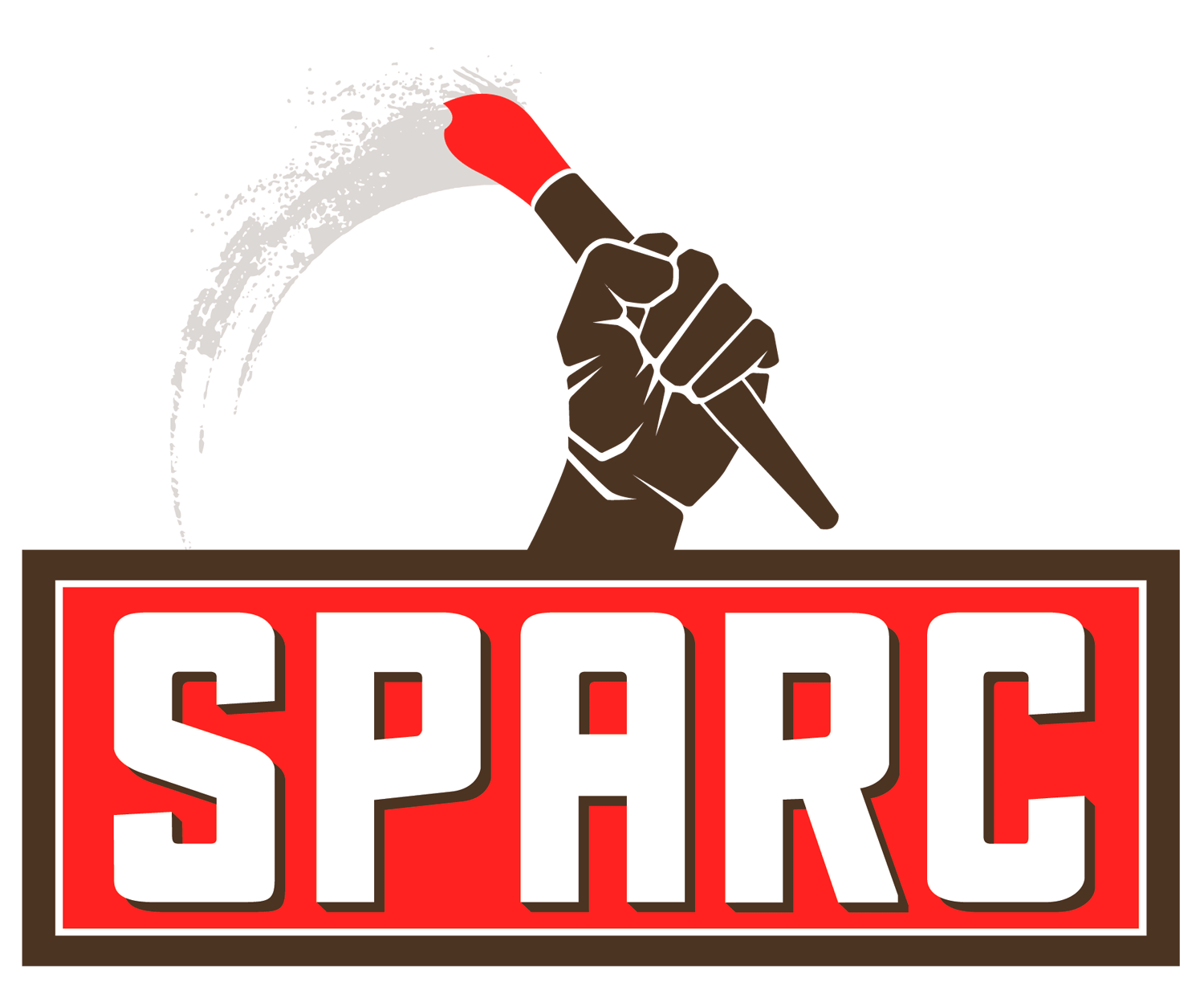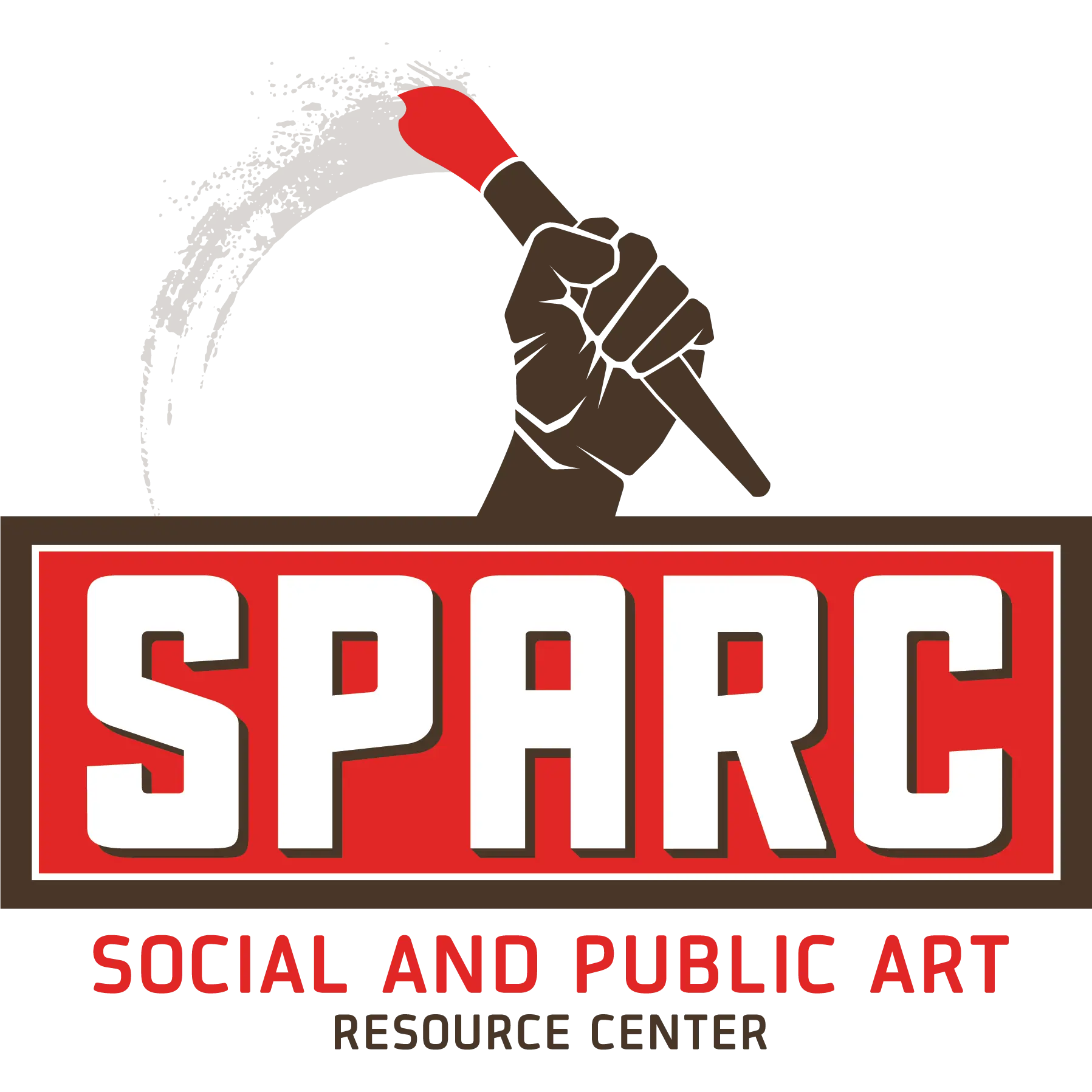The Conservation of “Not Somewhere Else, But Here” by Daryl Wells
The conservation of “Not Somewhere Else, But Here” by Daryl Wells
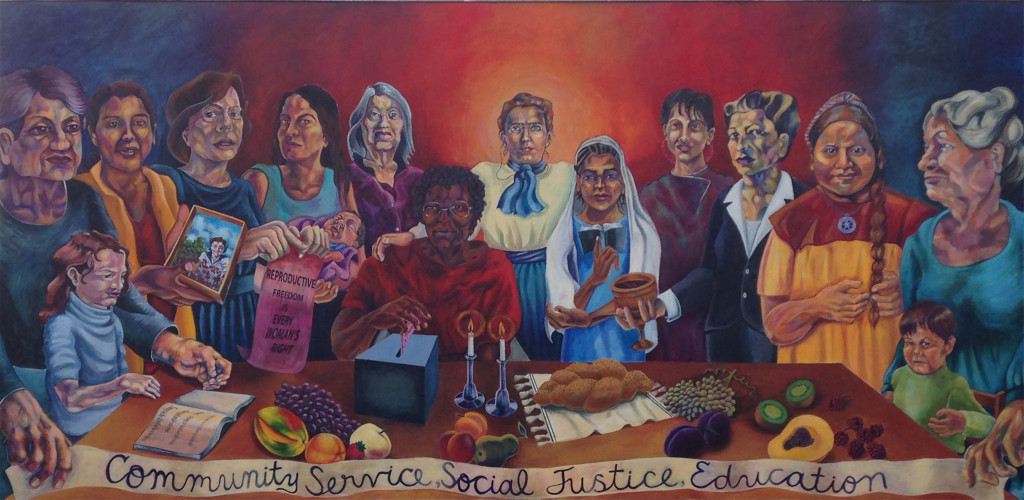
This mural emphasizes the themes of community service, social actions and education that the National Council of Jewish Women of Los Angeles endorses. Wells depicts influential and prominent women of varied ethnic backgrounds building community and sharing struggles through the act of “breaking bread” together. Furthermore, it is both homage to the women it depicts and also a gesture to the community in support of multiculturalism. The women depicted from left to right are: Betty Friedan (author and activist), Barbara Boxer (senator), Hannah Senesh (poet and holocaust rescue mission fighter), Dolores Huerta (United Farm Workers Union co-founder), Lee Krasner (artist), Barbara Jordan (congresswoman and civil rights worker), Emma Goldman (anarchist and labor rights activist), young woman of the Ethiopian Jewry, Aung San Suu Kyi (elected president of Burma, was put under house arrest), Lillian Hellman (playwright), Rigoberta Menchu (Guatemalan human rights activist and winner of the Nobel Peace Prize) and Hannah Solomon (founder, National Council of Jewish Women). “Not Somewhere Else But Here” has been written about by scholars and art historians since the 1990’s. Paul Von Blum, a respected art historian, published an important article on it with the University of Wisconsin shortly after its creation.
Artist Testimonials
“In fall of 2014, I was thrilled to have the opportunity to return to my mural at the NCJW on Fairfax Avenue, as part of a restoration heroically championed by SPARC. The timing was ideal for me to return to this pivotal piece, since I was in the midst of an artistic rebirth: after 17 years of teaching visual art to students of all ages, I had quit my job in June of that year in order to return to my focus to making my work again. This project was a powerful reminder of why public art has always been so important to me. It provided the camaraderie of working with a great team of artists and organizers; it included community in the conversation, with many passersby giving their thoughts and encouragement; and it presented an opportunity to acknowledge forces for positive change, as represented by the women featured in the design. SPARC’s new materials and techniques ensure more robust preservation of L.A.’s historic murals, and the restoration team’s amazing preparation and perseverance through the whirlwind week were a true inspiration. My mural looks better than ever before– even on the day of its unveiling, the colors and images never looked so vibrant and alive. I can’t thank everyone at SPARC enough for making this project possible, and for all the passionate commitment they put into ensuring the legacy of Los Angeles’ unique public art heritage.”
Daryl Wells, 2015

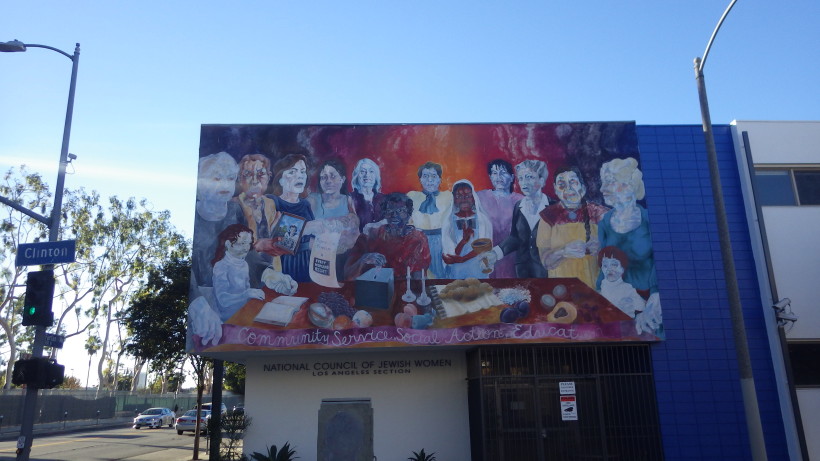
- Assessment of “Not Somewhere Else, But Here” before the restoration
-
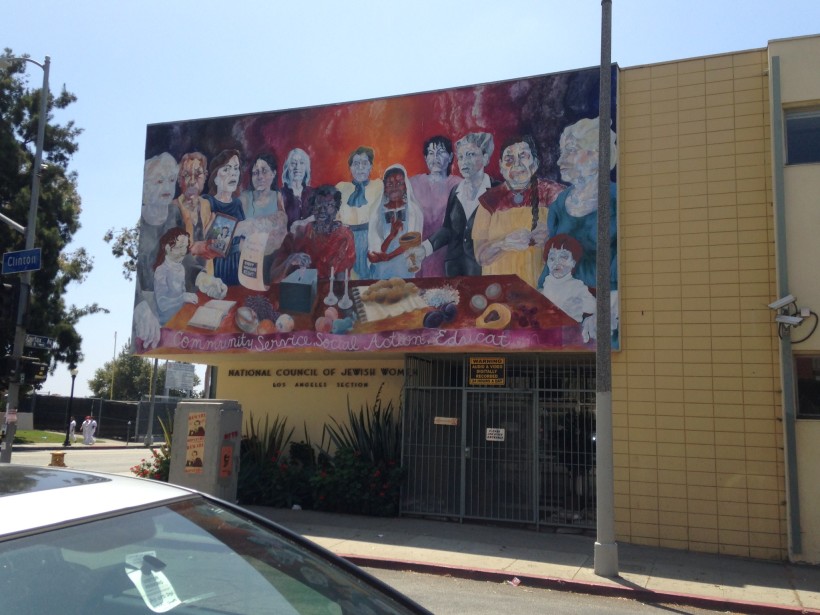
Assessment of “Not Somewhere Else, But Here” before the restoration 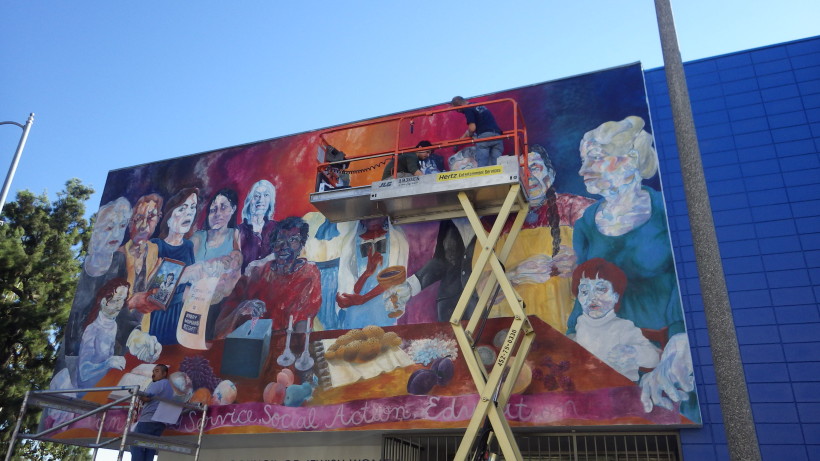
Restoration in progress 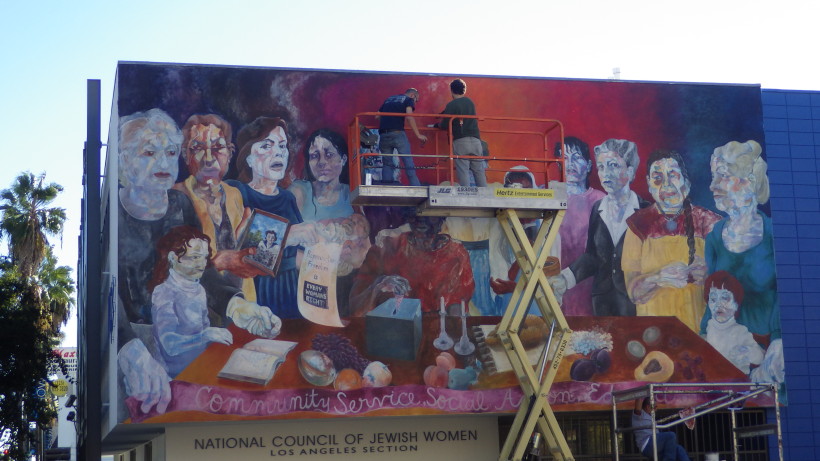
Restoration in progress 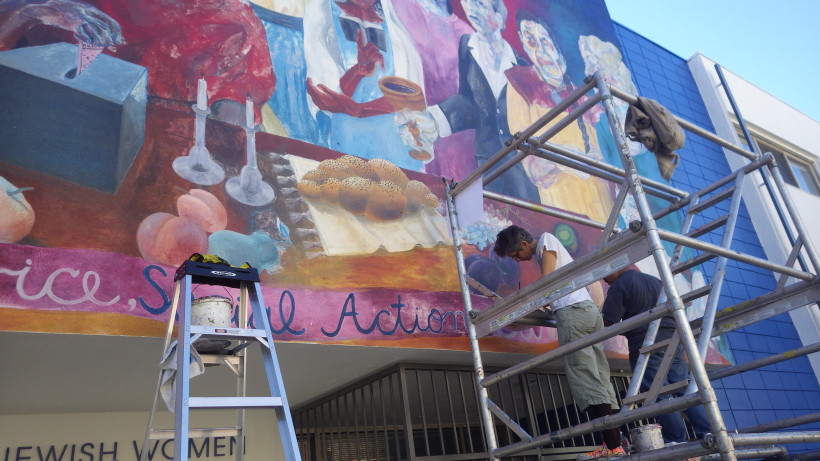
Restoration in progress 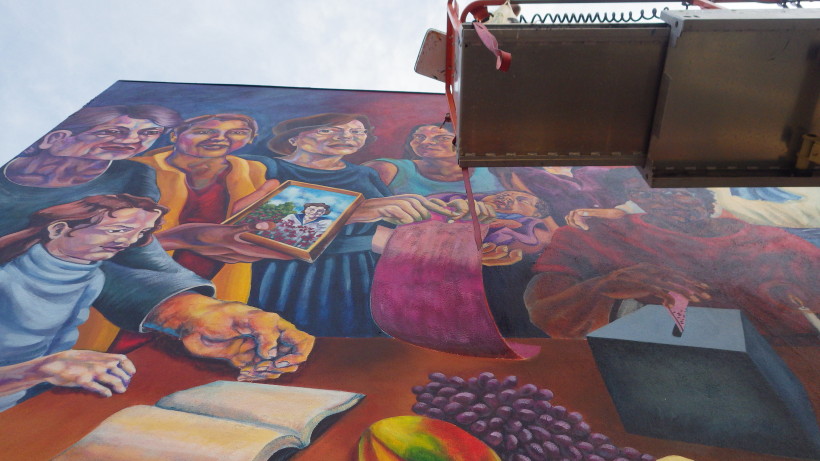
Restoration in progress 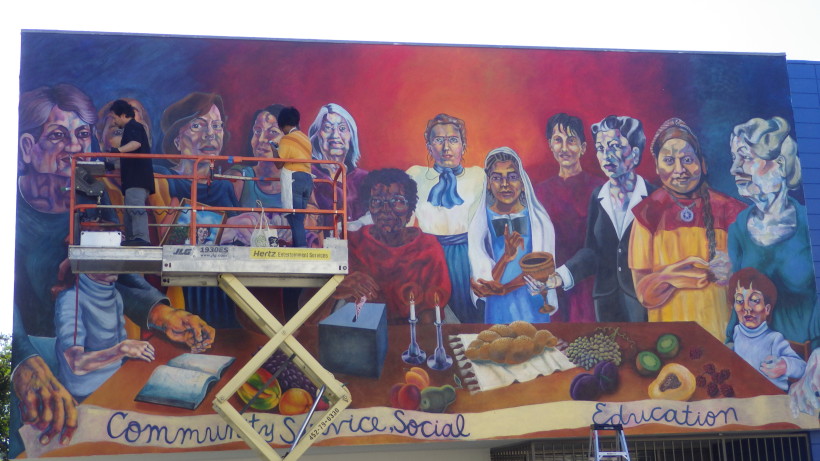
Restoration in progress 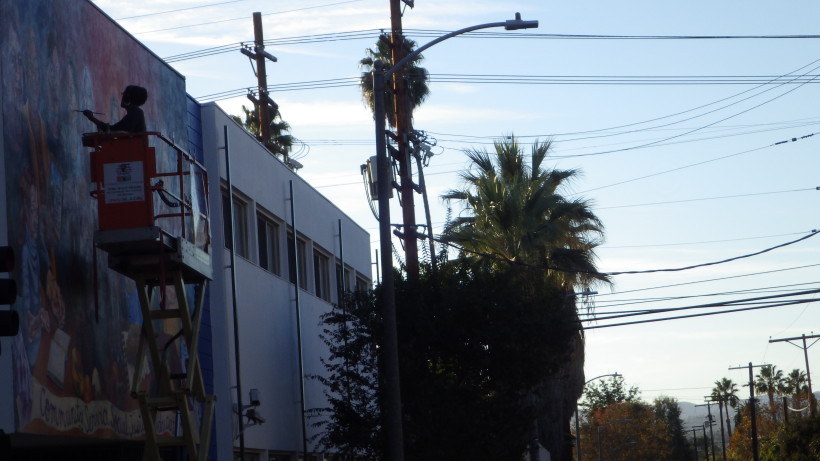
Restoration in progress 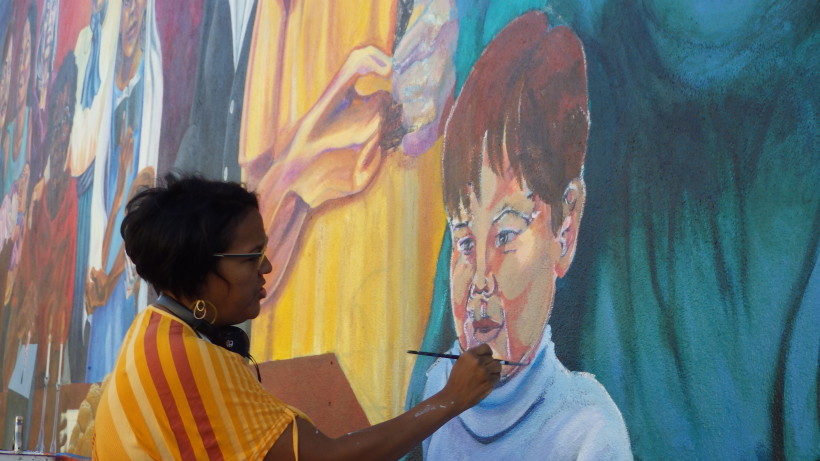
Artist Daryl Wells at work 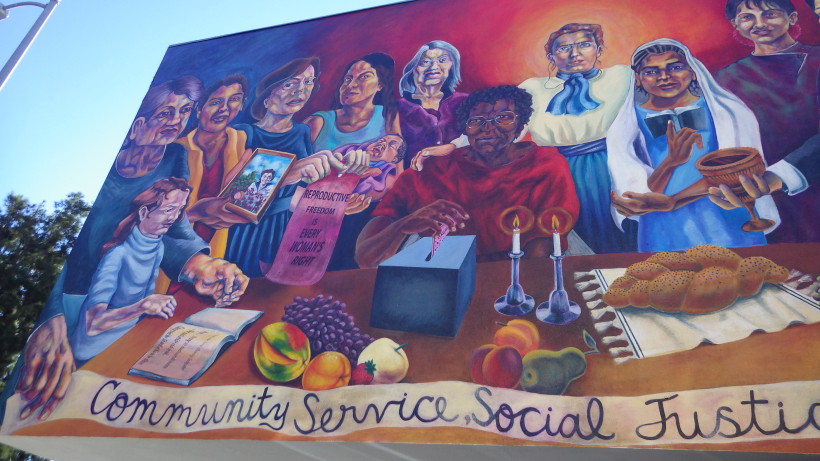
Restoration completed 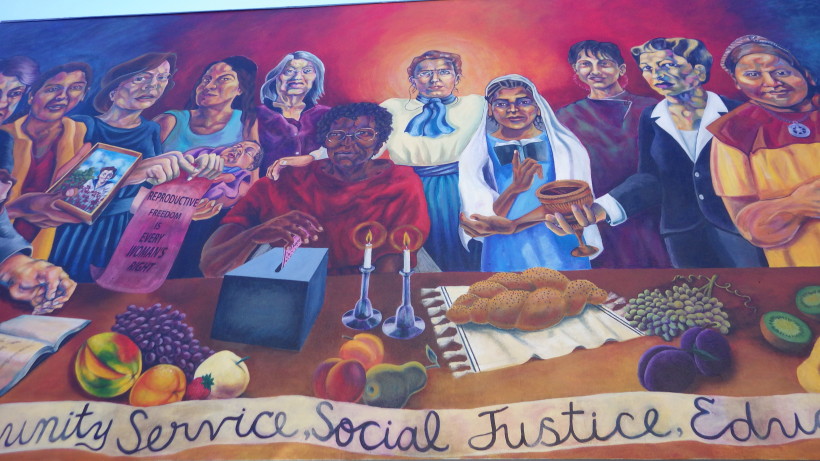
Restoration completed 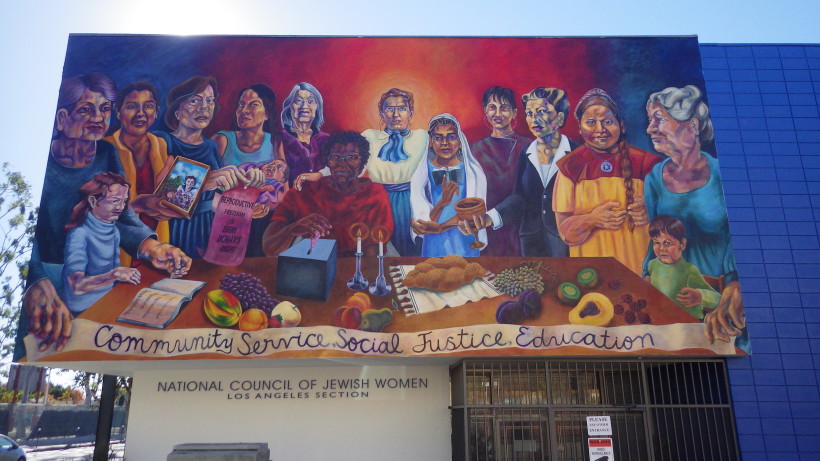 Restoration completed
Restoration completed###
